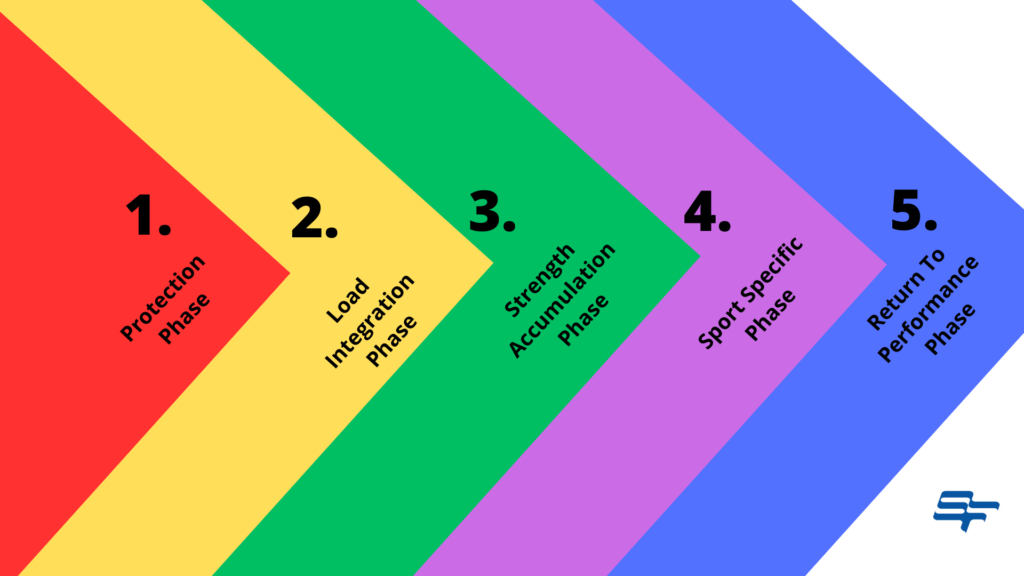POST OP ACL REHAB PROCESS
Keeping in mind that each ACL rehab is unique, and dependent on the type of surgery and graft as well, below is an outline on what the ACL Process should look like. You can read more about the different types of surgeries and their pros and cons here.
Phases of rehab Process
This initial phase sets a strong recovery foundation, protecting the knee using blood flow restriction cuffs and Compex to facilitate early healing without joint overload.
Transitioning focus towards heavier weights, this stage boosts strength, stability, and tolerance for increasingly dynamic rehabilitation activities.
Focuses on heavy weightlifting, regular running, increasing speed, and introducing changes of direction to build robust strength and dynamic agility
Integrates sport-specific training on the field, focusing on fitness enhancement while continuing gym-based strength routines to tailor skills and endurance precisely to sport demands.
Aims for full discharge, transitioning athletes back to complete game participation with optimal performance, endurance, and skill readiness.
The SportsFit 5 Stage ACL Rehab Program

This SportsFit ACL Rehab Program is our inhouse system developed to return those with an ACL injury back to performing better than they were before their injury.
Every person who comes in will have their program designed for them, broken up over 5 distinct stages over the course of 9 – 12 months.
You can read more about our ACL stats on our main website here
Pros and Cons of each type of graft
The best person to talk to about your graft type and the pros and cons is your surgeon. Below is an overview of the most commonly used graft
What is it?
An allograft is the tissue of a donor. The type of tissue typically depends on surgeon’s expertise and preference. Common allografts include semitendinosus/gracilis, peroneal tendon, patellar tendon.
Pros:
There is no donor site morbidity as there is in an autograft, meaning there is no further rehabilitation considerations that need to be made for the graft site
Typically may aid in resolving initial swelling and range of motion deficits given no donor site morbidity
Cons:
Tissue may not uptake as well in the knee as an autograft
Arguments may be made for higher risk of infection
Some studies say slightly higher rates of re-rupture – this varies on how the graft is prepared
What is it?
The middle portion of the patellar tendon is harvested and used as the ACL.
Pros:
No affect to the hamstring – reduces considerations for hamstring loading and high speed running
Native tissue typically uptaken well by body
Cons:
Typically slower to improve quadricep strength and control due to the role the patellar tendon plays in attenuating force
Can have more secondary patellofemoral pain during rehabilitation process
What is it?
Harvesting of the semitendinosus, and often the gracilis as well. Doubled over itself to provide a thicker graft, to use as the ACL.
Pros:
No affect to quadriceps, meaning initial rehab to get knee going is smoother
Most common graft used, so surgeon expertise is typically quite high with this
Cons:
Hamstring loading is slower to progress due to donor graft morbidity
High speed running has to be monitored closely to ensure no secondary hamstring injury
